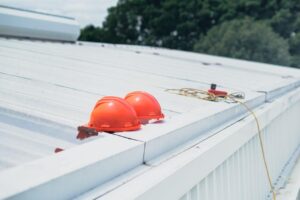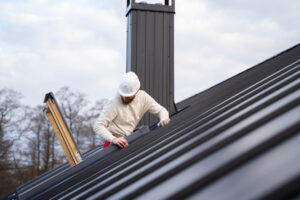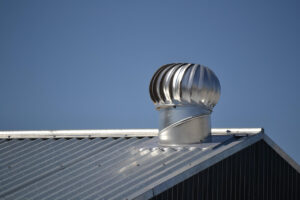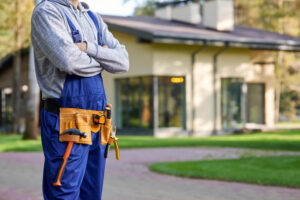A single upgrade can dramatically shift a space’s atmosphere—and in many homes or buildings, that upgrade is a custom metal railing. Whether enhancing a staircase, balcony, or exterior landing, the transformation is striking. What was once a utilitarian feature becomes a refined design element, adding personality and polish. From sleek modern interiors to rugged outdoor settings, metal railings offer a precise, durable blend of beauty and strength. They don’t just enhance appearance—they redefine structure, turning transitional spaces into architectural highlights.
The Visual Shift: From Basic to Bespoke
Before metal railings, many homes rely on dated wood or builder-grade solutions. These often blend into the background and show wear quickly. In contrast, well-designed railings can anchor a space. The shift from a plain spindle staircase to a black powder-coated steel railing, for example, instantly modernizes the entire entryway. The transformation is even more dramatic when replacing half walls or heavy wooden banisters with slimline metal profiles that open up the sightlines.
In open-concept homes, this makes an enormous difference. Metal doesn’t block light the way traditional materials do. This contributes to a brighter, more spacious feel. Designers often choose vertical or horizontal bar layouts, laser-cut panels, or cable systems to accentuate clean lines and sharp contrast. The change is subtle at first glance but unmistakable when viewing the entire room.
Integrating Metal Railings into Renovations
Renovating a space with metal railings doesn’t require a full architectural overhaul. In fact, it’s one of the most efficient ways to elevate design impact during remodeling. Whether you’re refreshing a cramped stairwell or opening up a second-floor landing, the choice of material can completely redefine the look. A metal railing for stairs adds clarity to transitions between levels while offering a bold visual accent.

In residential projects, transforming wood balusters into steel rods or adding cable rail systems brings a new visual rhythm to the home. The transformation is immediate and striking. It enhances the flow between floors and complements updated finishes like stone, hardwood, or tile.
On the exterior, switching from old lattice fencing to railings adds a layer of security and elegance. Garden stairs, decks, and rooftop terraces all gain a more refined and cohesive aesthetic. For properties that are being staged or prepared for resale, this change often boosts perceived value.
Strength and Stability Meet Design
Metal isn’t just about aesthetics—it’s a structurally sound choice. Compared to wood or vinyl, steel and aluminum railings offer far greater durability. They’re resistant to warping, cracking, and weather damage. Once installed, metal railings require minimal maintenance, which adds long-term value to any property.
In outdoor applications, the difference becomes more pronounced. Wrought iron or galvanized steel withstands the elements with ease, unlike wood that may rot or fade. The transformation here is both visible and practical. A previously unstable porch railing replaced with welded steel instantly improves safety while elevating curb appeal.
Even in commercial environments, metal railings carry design weight. Hospitals, office buildings, and public venues often choose architectural-grade railings that reflect the building’s purpose. Brushed stainless steel with glass infill panels suggests professionalism and innovation. The difference in how visitors experience the space—before and after—is intentional.
Customization and Detail Make the Difference
A key reason for the dramatic change metal railings provide lies in customization. Pre-made kits can’t match the precision or artistry of custom-fabricated metalwork. Every curve, joint, and weld can be tailored to match the setting. This bespoke element creates a seamless integration between the railing and the environment.
For traditional homes, scrollwork or forged iron details might echo historical character. In modern architecture, laser-cut patterns or minimalist rods can echo the lines of the furniture and trim. In every case, the before-and-after impact is visible not just in the materials but in the level of craft.

Interior designers often use railings to layer texture and contrast. Against natural wood floors or exposed concrete, metals like brass, bronze, or matte black powder-coated steel provide an unexpected richness. The railing becomes more than a boundary—it becomes a signature detail.
A Material That Ages Gracefully
Unlike wood or plastic composites, metal develops character over time. Stainless steel maintains its polished finish with minimal upkeep, while bronze and copper can oxidize into deep, natural patinas. Even powder-coated finishes are designed to last decades without fading.
The contrast is especially clear when comparing before-and-after photos of aged wood railings replaced with metal. Where paint chips and splinters once dominated, now clean, sharp lines frame staircases and balconies. The transition isn’t just modern—it feels permanent and rooted.
Because metal adapts so well to both old and new structures, it’s also an ideal material for mixed-style renovations. Homeowners and architects can use it to connect disparate parts of a building—bringing continuity to a space that once felt disjointed.
Bringing It All Together
Metal railings offer a transformation that is both timeless and contemporary, elevating spaces with a balance of safety and style. They showcase craftsmanship while maintaining a modern sensibility and bring renewed character to aging interiors or exteriors. Whether enhancing a modest staircase or a large commercial mezzanine, metal railings introduce a level of refinement that materials like wood or vinyl often lack. Their impact on a space’s visual narrative—achieved without major structural changes—makes them a smart and lasting addition to any renovation. Once installed, stairs and landings are no longer just transitional—they become design statements.






